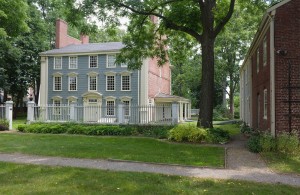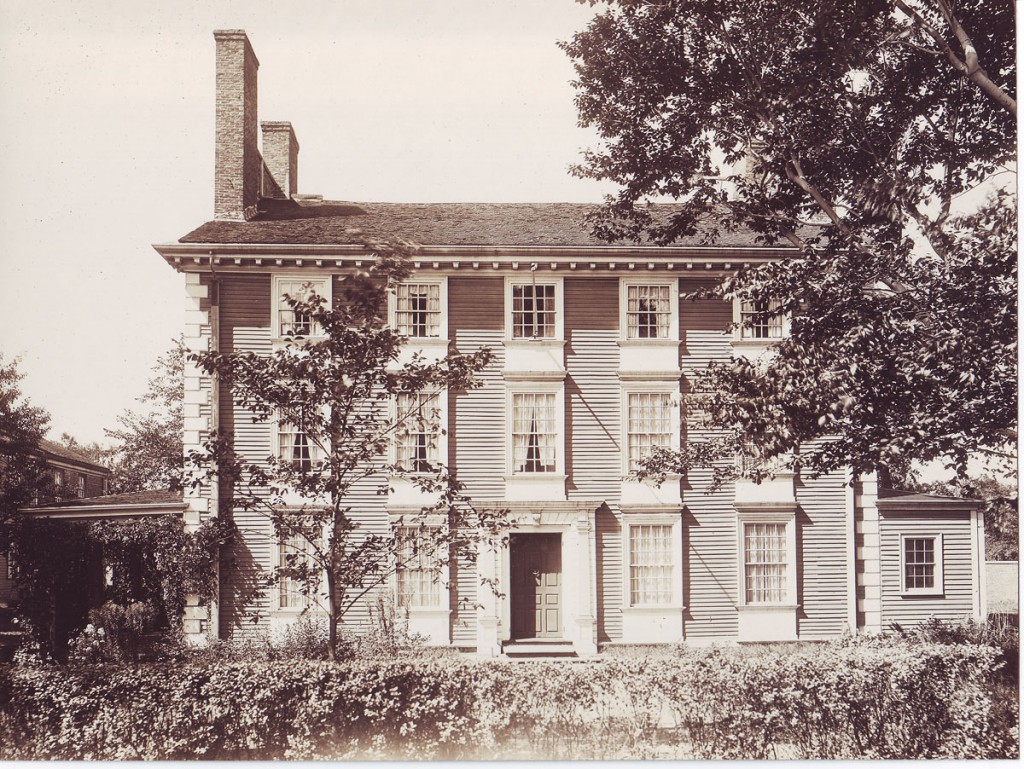After Isaac Royall Jr. fled to England at the outbreak of the Revolutionary War, the General Court confiscated his estate. The mansion was used during the early months of the Revolution by Generals Lee, Stark, and Sullivan, and was visited by George Washington who, according to legend, interrogated two British soldiers in the Marble Chamber.
After the Revolution, Washington’s secretary, Colonel Cary lived in the house for two years and in 1790 William Woodbridge kept a boarding and day school in the house. In 1804 the estate was returned to Isaac Royall Jr.’s heir, his granddaughter Elizabeth Royall Pepperrell Hutton, who sold the estate to Robert Fletcher for £16,000 in 1806.
Fletcher, in turn, sold portions of the property to a group of investors, and it was eventually sold (in 1810) to Jacob and Ruth (Dawes) Tidd. Jacob Tidd was a successful rum distiller who owned a fashionable home in Boston. The Royall estate was intended to be a summer home for him and his family, and he purchased many acres of land surrounding the house, which he used for the cultivation of flowers and fruit trees. After he passed away in 1821, Ruth Tidd lived in the house year-round until she died 40 years later in 1861. The house passed through several hands after this, and by the end of the 19th century had fallen into disrepair.
In 1898, the Sarah Bradlee Fulton Chapter of the Daughters of the American Revolution conceived the idea to preserve the Royall House “for the sake of its history and aesthetic value.” On Patriots Day they opened up the house to the public for a Loan Exhibition of colonial furnishings and valuable relics. In 1906 this group of women recruited a wider group of “patriotic men and women” and formed the Royall House Association. The group’s initial mission was to raise the $10,000 necessary to purchase the Royall House, the Slave Quarters, and three-quarters of an acre of surrounding land to be maintained as a museum, which they were able to do in April 1908. A number of interior and exterior restorations of the buildings and site have been conducted over the years, and in 1962, the Royall House was designated a National Historic Landmark. Today the Royall House Association (RHA) owns and operates the Royall House and Slave Quarters as a museum and educational resource.


